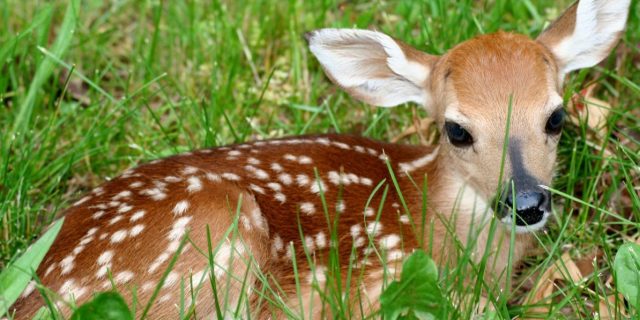07
Sep
Trouble for Bambi: Neonic Levels in Wild Deer Spiking in Minnesota Raise Contamination Concerns

(Beyond Pesticides, September 7, 2022) Neonicotinoid (neonic) insecticides are causing widespread contamination within deer populations in Minnesota, with recent data showing significant increases over sampling that took place just two years earlier. The Minnesota Department of Natural Resources (MDNR) began sampling the spleens of deer in the state after research conducted in South Dakota found widespread contamination, but also links to harmful effects as a result of the exposure. The latest findings will result in further testing, yet the sum of research on the dangers of neonicotinoids – not only to deer, but pollinators, birds, aquatic wildlife, and even human health – demands, according to advocates, a precautionary approach and meaningful restrictions on these potent systemic pesticides.
Officials at MDNR have no explanation for the increase in contamination over the last sample period. “We’re not exactly sure why we saw that increase,” said Department of Natural Resources Ungulate Research Scientist Eric Michel, PhD, to mprnews.org. “But regardless, the two years of data are showing us that neonics are being detected pretty much across the state. When we look for them we find them in deer spleens. So that’s kind of the big takeaway from what we’re seeing right now.”
Results of the 2019 sampling showed ubiquitous contamination of deer spleens throughout the state. Of 799 deer spleens analyzed that year, 61% of them contained neonics. The 2021 results focus in on the southwest area of the state, where there is more farming and forestland. Of the 496 samples tested in that area, 94% of samples analyzed find neonics.
Not only did prevalence of the chemicals increase, so did concentration. The research conducted on neonics and deer in South Dakota determined that a body burden of neonics over .33 parts per billion represents a risk threshold for adverse effects. At this level, exposed fawns in laboratory experiments died. The South Dakota study found 77.5% of 367 spleen samples in wild deer were above this threshold. The 2019 results in Minnesota saw only 29% of samples exceeding this risk threshold. But the latest findings show 64% of neonic detections above this level.
“So we had quite a big increase,” said Dr. Michel to mprnews.org. “We went from about a third of the samples to two-thirds of the samples.”
MDNR is receiving its spleen samples from hunters in the region. Despite the contamination, the state is not currently warning hunters not to eat venison. While the results show cause for concern for deer in agricultural regions, officials note that the contamination is everywhere. “We’re finding neonics statewide, this isn’t just in our agricultural regions. This isn’t just an agricultural issue, if anything, our data showing that,” said Dr. Michel to mprnews.org. “So I think it’s just really important to remember that this is something we’re finding across the state. And we’re just trying to better understand it.”
Plans are underway to conduct more intensive sampling where deer hunting is permitted in the state, but specific locations have not yet been determined. There are also efforts in the legislature to fund a fawn mortality study to better understand impacts on the ground. However, advocates underscore that these efforts do not represent a precautionary approach. With strong evidence of widespread contamination at concerning levels, and data showing harmful effects at these low concentrations, advocates say it is incumbent upon lawmakers to take action, not merely continue to observe an ongoing catastrophe.
Several states have already taken measures to address the widespread contamination that has resulted from the use of neonicotinoids. Connecticut, Maryland, Vermont, Massachusetts, Maine, New Jersey, New York, and Rhode Island have taken measures to address neonicotinoid contamination. California is set to join this group through the recent passage of legislation. Yet even these state level measures are not enough. Most state bills passed to date generally restrict consumer uses of pesticides, at best restricting all outdoor nonagricultural uses. The gold standard for restrictions on these harmful insecticides remains the European Union, which eliminated all outdoor uses (including agriculture) of the major neonicotinoid insecticides in 2018.
Minnesota, for its part, passed legislation in 2014, giving consumers more information about whether their garden had been sprayed with neonicotinoids. But the following year, after a change in political power at the state house, this protective language was repealed.
Neonicotinoid contamination is a cross-cutting issue that raises concerns for a range of groups – from hunters to farmers, environmentalists, public health advocates, and conservationists. Yet these chemicals are still permitted in some of our most pristine environments, where wildlife are highly likely to be exposed at concerning levels. Join Beyond Pesticides in urging U.S. Fish and Wildlife to protect the nation’s wildlife refuges from contamination from neonics and other hazardous pesticides. See actions from Pollinator Week 2022 for more about steps you can take to safeguard the natural world from these dangerous chemicals.
All unattributed positions and opinions in this piece are those of Beyond Pesticides.
Source: MPRnews.org, Field and Stream











Dear U.S. Fish and Wildlife,
September 7th, 2022 at 2:32 pmPlease with urgency protect the nation’s wildlife refuges from contamination from neonics and other hazardous pesticides. The use 0f these toxins in pesticides has caused immense dangerous, deadly, irreversible contamination and pollution. Please I STRONGLY urge you to eliminate these products. Respectfully, .